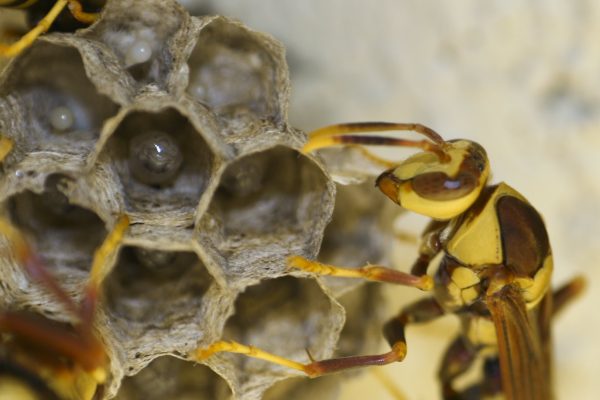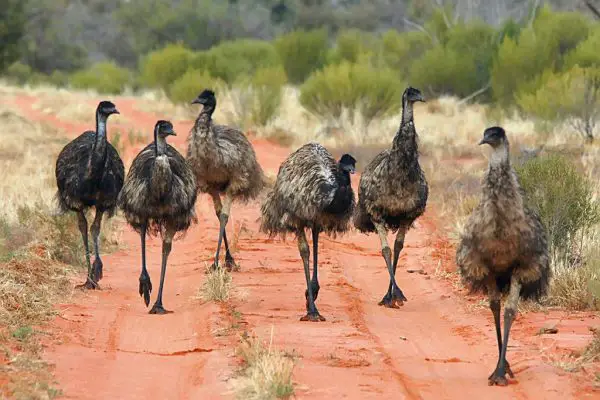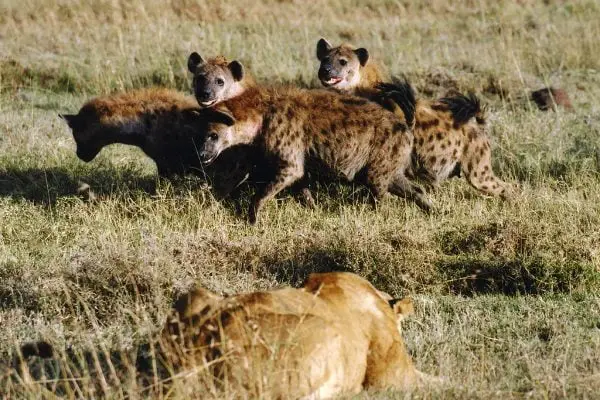Kangaroos, with their powerful leaps and iconic pouches, are a captivating symbol of the Australian outback. These iconic marsupials not only boast remarkable physical adaptations but also exhibit fascinating social behavior. By delving into the diverse collective nouns used to describe groups of kangaroos, we embark on a journey beyond the red sand dunes, exploring their social dynamics, ecological significance, and the challenges they face in a changing world.
Collective Nouns For Kangaroos
While “mob” is the most widely used collective noun for kangaroos, signifying a large and loosely organized group, other terms paint a more nuanced picture depending on the context:
- Mob: This term evokes a sense of abundance, shared space, and collective movement. It signifies a large group of kangaroos gathered together in a specific area, often grazing or socializing. The image it creates is one of a bustling community, showcasing their social nature and shared use of resources.
Example: As the golden light of dawn bathed the outback landscape in a warm glow, a mob of kangaroos emerged from the sparse trees. Their powerful legs propelled them across the dusty plains, their pouches bouncing rhythmically, creating a captivating display of shared movement and collective activity.
- Troop: This term signifies a smaller and more organized group of kangaroos, often associated with females and their young. It evokes a sense of family unit, cooperative behavior, and shared responsibility. The image it creates is one of a cohesive group, highlighting the importance of social bonds and shared nurturing within kangaroo society.
Example: Nestled amongst the shade of towering gum trees, a troop of kangaroos grazed peacefully. Mothers kept a watchful eye on their joeys peeking out from their pouches, showcasing the strong maternal bonds and cooperative behaviors within this family unit.
- Herd: This term, though less commonly used for kangaroos, can describe a large and loosely organized group of kangaroos grazing or browsing together in a specific area. It evokes a sense of abundance, shared purpose, and synchronized movement. The image it creates is one of a large group moving collectively, highlighting their shared focus on foraging and resource utilization.
Example: As the sun dipped below the horizon, casting long shadows across the vast plains, a herd of kangaroos grazed on the lush green pasture. Their powerful jaws munched on the vegetation in a synchronized rhythm, creating a peaceful scene of shared purpose and collective resource utilization.
- Court: This term, with its historical association with royalty, adds a touch of elegance and intrigue to the description of kangaroos. While not widely used, it can describe a group of kangaroos gathered around a watering hole or a food source, often including males competing for mates. It evokes a sense of competition, social display, and hierarchical structure. The image it creates is one of a group with a dynamic social hierarchy, highlighting the complex interactions within kangaroo society.
Example: Under the watchful gaze of the full moon, a court of kangaroos gathered around a waterhole. The dominant male stood tall, his muscular silhouette casting a long shadow, while other males engaged in displays of strength and agility, showcasing the competitive nature and complex social interactions within this group.
Interesting Facts About Kangaroos
Understanding these collective nouns goes beyond mere vocabulary; it allows us to appreciate the complexities of kangaroo behavior and their vital role in the Australian ecosystem:
Masters of Adaptation: Kangaroos possess remarkable adaptations for survival in the harsh Australian environment. Their powerful legs allow for efficient locomotion, their unique digestive system enables them to extract nutrients from tough vegetation, and their pouches provide a safe haven for their young.
Social Creatures: Kangaroos exhibit complex social structures, forming close bonds within family units and engaging in various social interactions within larger groups. These social interactions play a crucial role in foraging, predator avoidance, and reproduction.
Ecological Significance: Kangaroos play a vital role in maintaining the health of the Australian ecosystem. They act as grazers, dispersing seeds through their droppings, and contribute to nutrient cycling through their grazing activities.
Final Thoughts
From the bustling “mob” to the nurturing “troop,” the diverse collective nouns for kangaroos offer a glimpse into their multifaceted lives and enduring presence in the Australian landscape. By appreciating these terms, understanding their intricate behavior, and acknowledging their ecological significance, we can ensure that these captivating creatures continue to hop across the plains, inspire awe, and maintain their crucial role in the delicate balance of the Australian ecosystem for generations to come.





